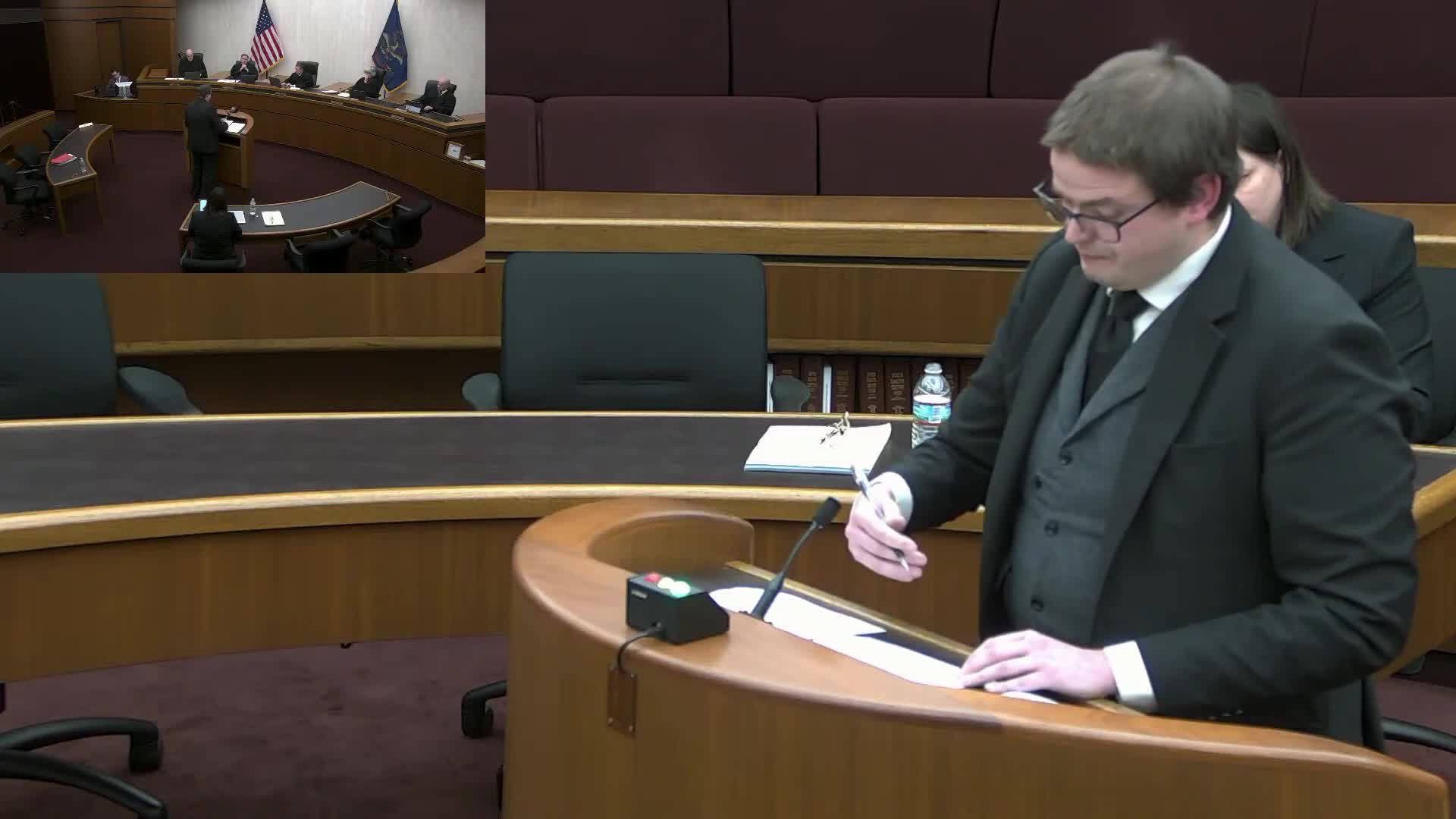Court debates evidence sufficiency in firearm conviction case
January 11, 2025 | Supreme Court , State Agencies, Organizations, Executive, North Dakota
This article was created by AI summarizing key points discussed. AI makes mistakes, so for full details and context, please refer to the video of the full meeting. Please report any errors so we can fix them. Report an error »

In a pivotal session at the North Dakota Supreme Court, the justices delved into the complexities of the State v. Henderson case, focusing on the sufficiency of evidence regarding firearm operability. The courtroom buzzed with anticipation as attorneys presented their arguments, each seeking to sway the court's interpretation of the jury's verdict.
The state urged the court to uphold the jury's decision, asserting that the evidence presented was adequate for the jury to reach its conclusions. They emphasized that the jury's findings were not irrational, suggesting that the totality of the evidence supported the convictions. However, the defense raised critical questions about the evidence's sufficiency, particularly regarding whether the firearm in question was capable of expelling a bullet.
Miss Crossfire, representing the defense, argued that mere visual inspection of the firearm was insufficient to establish its operability. She contended that there must be direct testimony confirming that the gun could fire, likening the situation to identifying illegal substances based solely on appearance without objective testing. This point sparked a lively exchange among the justices, who probed the implications of relying on lay testimony versus requiring concrete evidence of a firearm's functionality.
The discussion turned to the concept of "obvious error," with the defense asserting that the trial judge should have intervened due to a lack of evidence on a critical element of the case. They argued that the judge's failure to act constituted a significant oversight, potentially undermining the integrity of the jury's decision. The justices appeared engaged, weighing the nuances of legal standards and the responsibilities of the court in ensuring that sufficient evidence supports a conviction.
As the session drew to a close, the justices were left to consider the implications of their ruling, not only for Henderson but for future cases involving similar evidentiary challenges. The outcome could set a precedent regarding the standards of proof required in firearm-related convictions, highlighting the delicate balance between jury discretion and judicial oversight in the pursuit of justice.
The state urged the court to uphold the jury's decision, asserting that the evidence presented was adequate for the jury to reach its conclusions. They emphasized that the jury's findings were not irrational, suggesting that the totality of the evidence supported the convictions. However, the defense raised critical questions about the evidence's sufficiency, particularly regarding whether the firearm in question was capable of expelling a bullet.
Miss Crossfire, representing the defense, argued that mere visual inspection of the firearm was insufficient to establish its operability. She contended that there must be direct testimony confirming that the gun could fire, likening the situation to identifying illegal substances based solely on appearance without objective testing. This point sparked a lively exchange among the justices, who probed the implications of relying on lay testimony versus requiring concrete evidence of a firearm's functionality.
The discussion turned to the concept of "obvious error," with the defense asserting that the trial judge should have intervened due to a lack of evidence on a critical element of the case. They argued that the judge's failure to act constituted a significant oversight, potentially undermining the integrity of the jury's decision. The justices appeared engaged, weighing the nuances of legal standards and the responsibilities of the court in ensuring that sufficient evidence supports a conviction.
As the session drew to a close, the justices were left to consider the implications of their ruling, not only for Henderson but for future cases involving similar evidentiary challenges. The outcome could set a precedent regarding the standards of proof required in firearm-related convictions, highlighting the delicate balance between jury discretion and judicial oversight in the pursuit of justice.
View full meeting
This article is based on a recent meeting—watch the full video and explore the complete transcript for deeper insights into the discussion.
View full meeting
